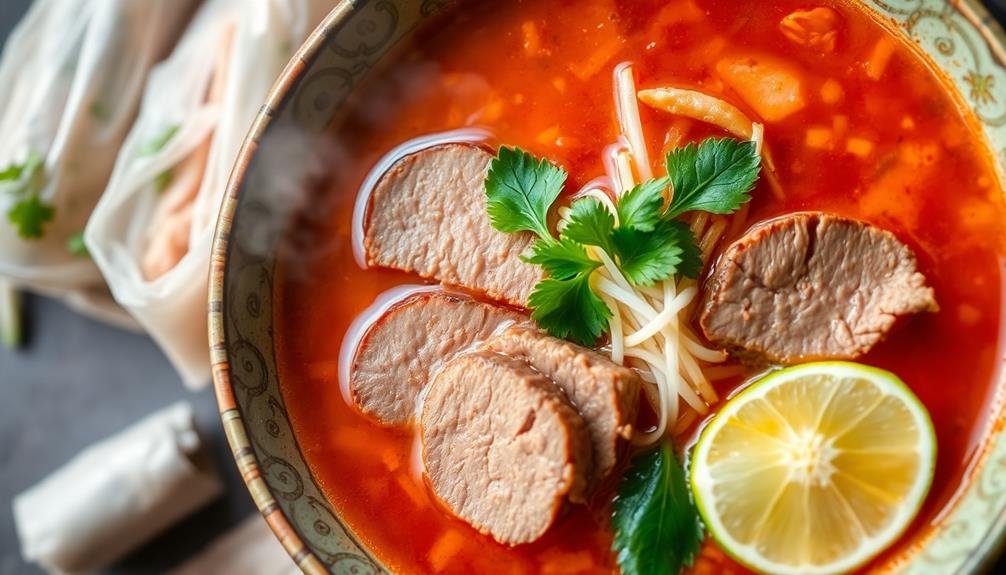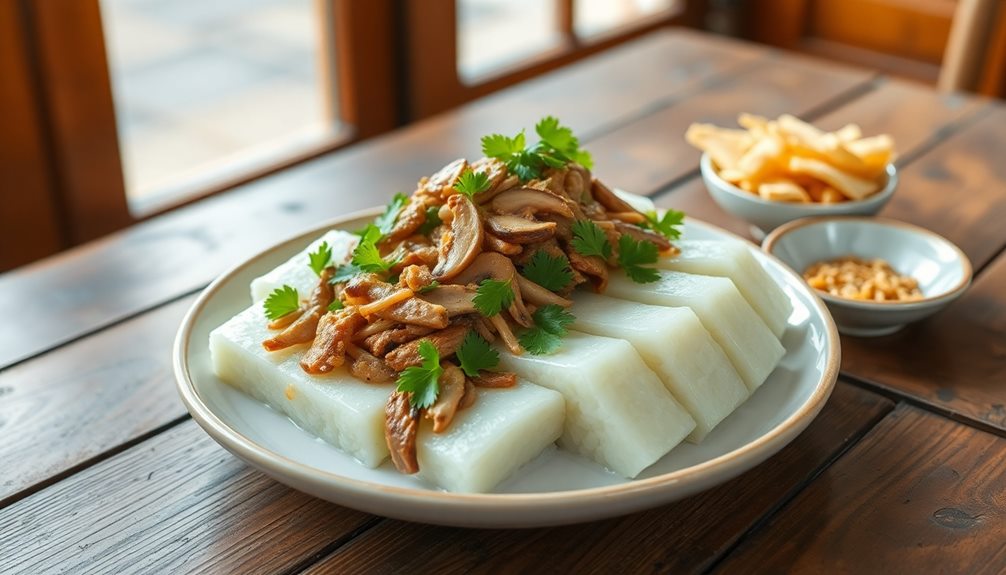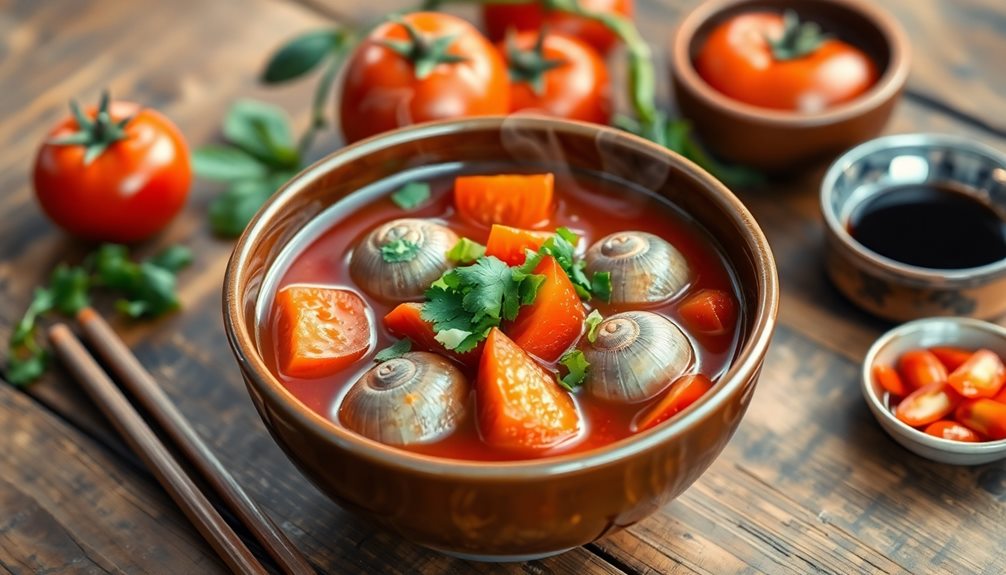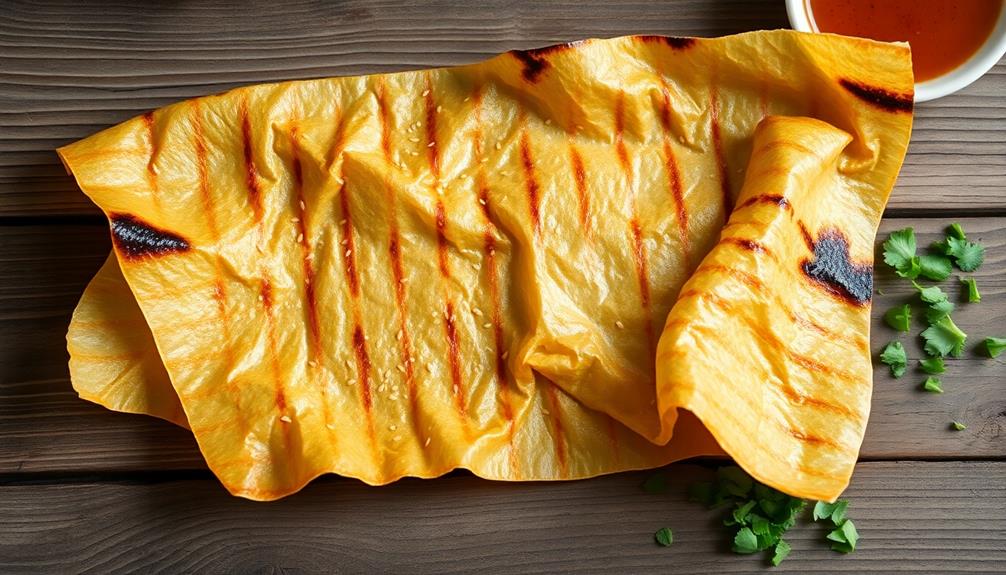Ah, the delightful Vietnamese rice paper rolls known as pho cuon! These tasty treats have a rich history dating back centuries in the streets of Hanoi. You'll find tender beef or juicy chicken, along with fresh veggies like crisp carrots and cool cucumbers, all rolled up in a soft, chewy rice paper wrapper. The secret is the flavorful dipping sauce – a blend of sweet and savory that brings out the best in every bite. Pho cuon offers a captivating culinary experience, engaging all your senses. Want to learn more about this beloved Vietnamese dish and how to make it at home?
Key Takeaways
- Pho cuon, or Vietnamese rice paper rolls, originated in Hanoi and have evolved into a beloved dish in Vietnamese cuisine globally.
- The key ingredients in pho cuon include rice paper wrappers, cooked rice noodles, various proteins, fresh herbs, and vegetables, along with a dipping sauce.
- The cooking process involves soaking rice paper sheets, draining them, placing the desired fillings, and carefully rolling the sheets to create the final dish.
- Pho cuon offers a balance of flavors and textures, combining chewy noodles, tender proteins, and crunchy vegetables, making it a nutritious and delightful meal.
- Pho cuon has gained widespread popularity, with variations featuring different proteins and vegetables, catering to diverse dietary preferences, and frequently featured in food festivals and culinary events.
History
Originating in Vietnam, pho cuon, a delectable rice noodle roll, has a rich history that dates back centuries.
You can just imagine the aroma of sizzling beef, fragrant herbs, and warm, chewy rice noodles wafting through bustling Vietnamese markets centuries ago.
These mouth-watering rolls started as a simple, yet satisfying, street food enjoyed by locals.
Over time, the recipe evolved, with different regions putting their own unique spin on the classic dish.
Today, pho cuon has become a beloved part of Vietnamese cuisine, enjoyed by people all around the world.
Whether you're savoring the classic beef version or trying a creative new filling, each bite takes you on a flavorful journey through Vietnam's vibrant culinary heritage.
Recipe
Pho Cuon is a Vietnamese dish that combines the aromatic flavors of pho with the delicate texture of fresh rice paper rolls. This dish is a perfect balance of textures and tastes, making it a beloved staple in Vietnamese cuisine.
The key to a successful Pho Cuon lies in the careful preparation of the individual components. By layering the tender rice noodles, savory beef, and fragrant herbs, each bite delivers a symphony of flavors that will delight your palate.
Ingredients:
- Rice paper wrappers
- Cooked rice noodles
- Thinly sliced beef (such as sirloin or flank steak)
- Fresh mint leaves
- Fresh cilantro leaves
- Sliced scallions
- Nuoc cham (Vietnamese dipping sauce)
To prepare the Pho Cuon, begin by soaking the rice paper wrappers in warm water until they become soft and pliable. Lay a wrapper flat on a clean surface, and place a small portion of noodles, beef, mint, cilantro, and scallions in the center.
Carefully roll the wrapper around the fillings, ensuring a tight and compact roll. Repeat this process until all the ingredients are used. Serve the Pho Cuon with the nuoc cham dipping sauce on the side.
When preparing this dish, it's important to work quickly and gently to avoid tearing the delicate rice paper. Additionally, be mindful of the balance of flavors and textures, as the combination of the chewy noodles, tender beef, and fresh herbs is what makes Pho Cuon so special.
Cooking Steps
First, you'll need to soak the rice paper sheets in water until they're nice and soft.
Drain the sheets well, then place them on a clean surface.
Now it's time to add your favorite fillings – get creative!
Step 1. Soak Rice Paper Sheets in Water
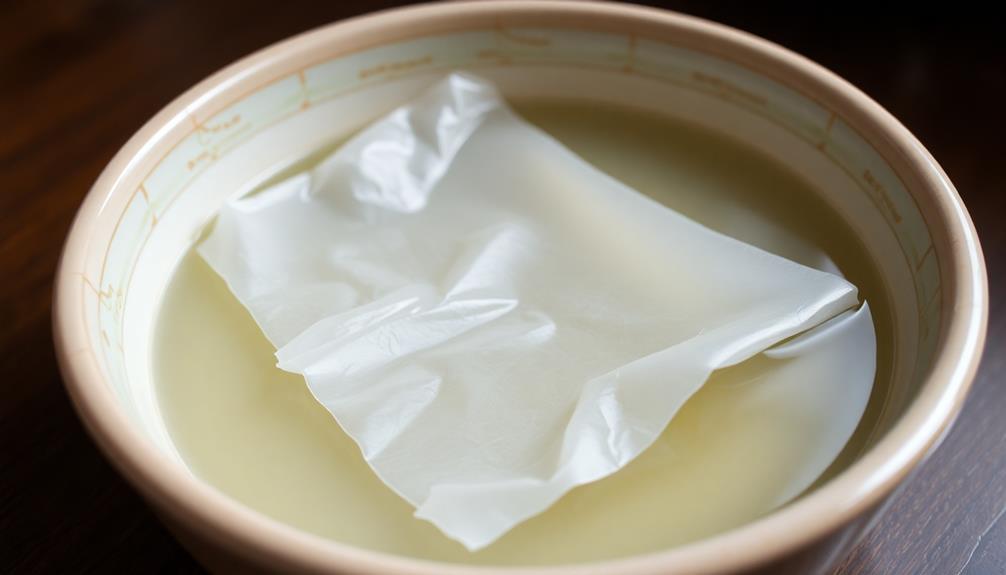
Before you can begin assembling the pho cuon rolls, you'll need to soak the rice paper sheets in water. This simple step is essential, as it softens the sheets and makes them pliable, allowing you to roll them up without breaking.
Fill a wide, shallow dish or bowl with cool water. Gently submerge the rice paper sheets, one at a time, and let them sit for about 30 seconds. You'll see the paper start to soften and become more flexible.
Carefully remove the sheet from the water, shaking off any excess.
Now you're ready to begin building your pho cuon! Lay the softened sheet on a clean, flat surface and add your desired fillings. Roll it up tightly, tucking in the sides as you go. The soaked rice paper will cling to itself, creating a neat and tidy wrap.
Repeat this process until all your rolls are assembled and ready to serve. With the rice paper prepped, the fun part of constructing these delicious Vietnamese treats can begin!
Step 2. Drain Soaked Rice Paper Sheets
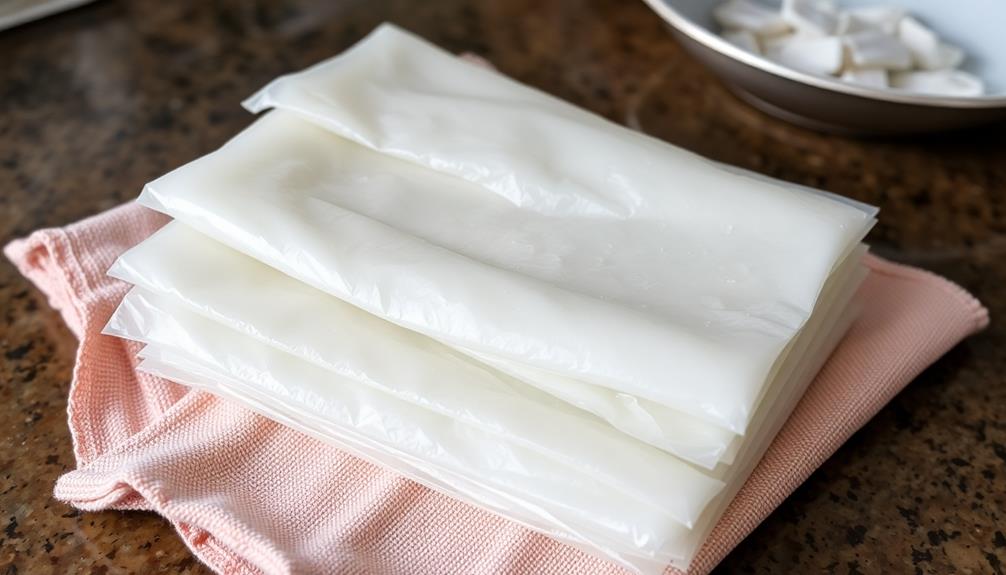
After soaking the rice paper sheets, it's important to drain them properly before assembling the pho cuon rolls.
You'll want to lift the softened sheets out of the water one by one and let the excess liquid drip off. Place them on a clean, flat surface like a cutting board or plate.
Gently pat the sheets with a paper towel to soak up any remaining moisture. This step is crucial, as wet rice paper can be tricky to work with and won't roll up neatly.
Once the sheets are just damp, not soggy, you're ready to start filling and rolling. Be sure to work quickly, as the rice paper can dry out fast.
With a little practice, you'll get the hang of handling these delicate wrappers. Soon, you'll be rolling up tasty pho cuon that are perfectly plump and ready to enjoy!
Step 3. Place Rice Paper on Surface
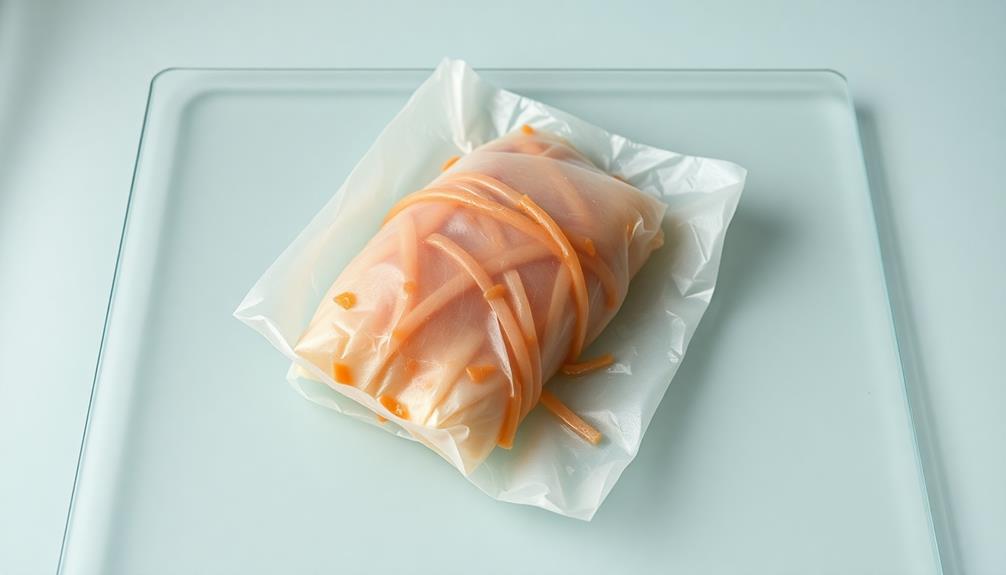
Once the rice paper sheets have been properly drained, you'll want to lay them out on a clean, flat surface. This could be a large cutting board, a kitchen counter, or even a clean dish towel on the table.
Make sure the surface is free of any crumbs or debris that might stick to the delicate rice paper.
Gently place each sheet down, taking care not to overlap them. You'll want to spread them out, leaving a little space between each one. This will help prevent them from sticking together as you work.
Feel the smooth, slightly tacky texture of the rice paper under your fingertips. It's almost like handling thin, edible plastic!
Now that your rice paper is all set up, you're ready to start assembling your delicious Pho Cuon rolls.
Get ready to layer on the flavorful fillings and roll them up tight. Your homemade Pho Cuon is about to come to life!
Step 4. Place Desired Fillings
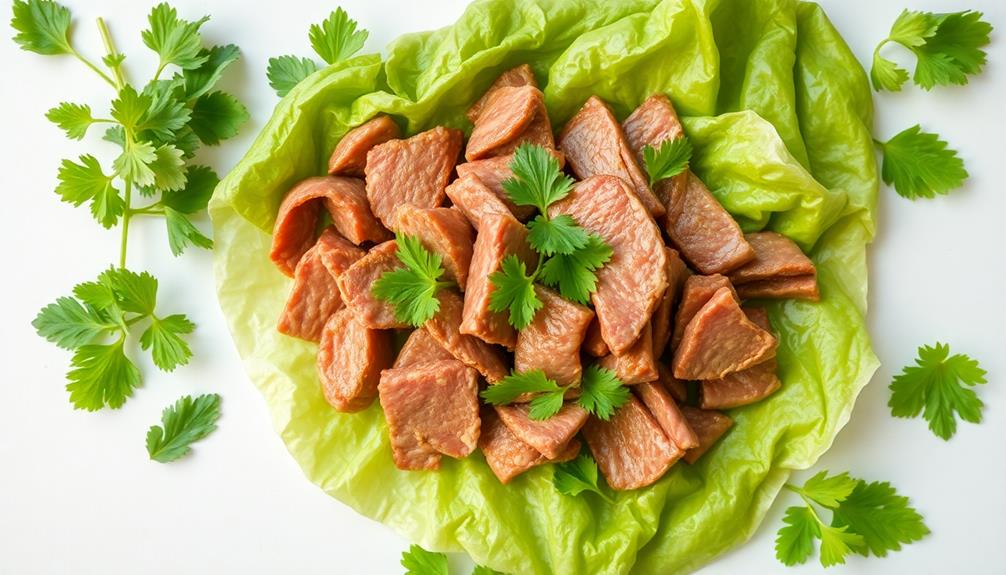
With your rice paper sheets laid out and ready, it's time to start adding the delicious fillings that will make your Pho Cuon rolls truly memorable.
First, place a generous portion of cooked rice noodles in the center of each sheet. Then, add a few slices of tender beef, crunchy bean sprouts, and fresh herbs like mint and cilantro.
Don't be shy – load up those rolls! The more fillings you add, the more flavorful and satisfying your Pho Cuon will be. Feel free to get creative, too. You can try adding shredded carrots, thinly sliced cucumbers, or even a drizzle of soy sauce or hoisin for extra zing.
Just be sure to leave enough space around the edges so you can roll everything up tightly. With your fillings in place, you're one step closer to enjoying the delightful combination of flavors and textures in your homemade Pho Cuon.
Step 5. Carefully Roll up the Rice Paper
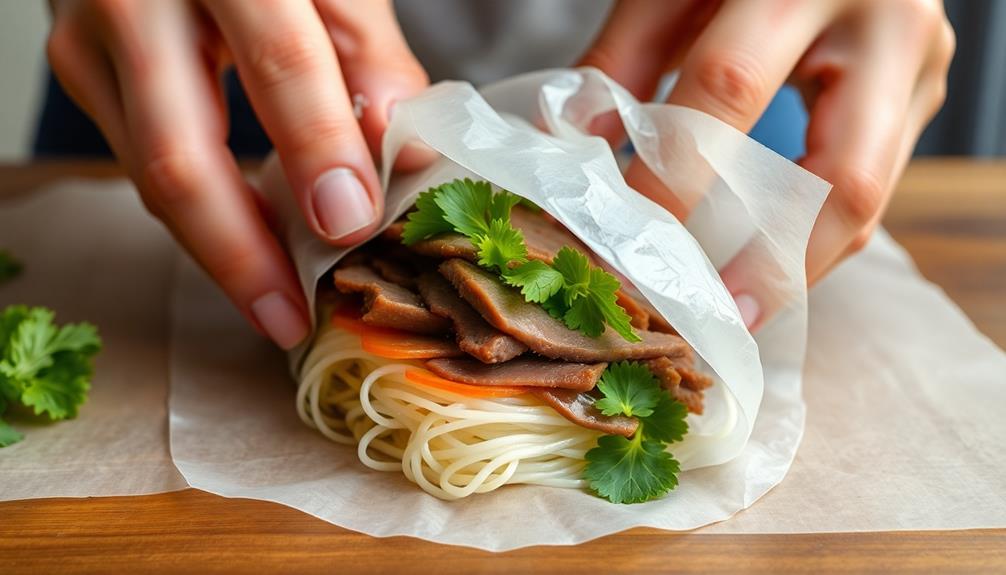
Gently pick up one of the rice paper sheets and place it on a clean, flat surface. Using your fingers, lightly moisten the entire sheet by dipping it in the warm water for just a second or two. Shake off any excess water and lay the sheet flat again.
Now, arrange your desired fillings in a neat line across the center of the sheet, leaving a few inches of space on each side. Carefully fold the bottom edge up over the fillings, then fold in the sides and continue rolling tightly up to the top edge. Apply a bit of gentle pressure to seal the roll.
Repeat this process with the remaining rice paper sheets and fillings, creating beautiful, fresh spring rolls. Once all the rice paper sheets have been filled and rolled, you can serve them alongside a traditional Vietnamese dipping sauce, or nuoc cham. This sauce is made from fish sauce, lime juice, sugar, and water, and adds a delicious tangy flavor to the spring rolls. For a more filling meal, you can also make a batch of Vietnamese nem ran/cha gio recipe, which are crispy fried spring rolls filled with savory pork, shrimp, and vegetables. These can be served alongside the fresh spring rolls for a satisfying and delicious meal.
Arrange the completed pho cuon on a serving platter and enjoy their delicate flavors and lively textures. The repetition of rolling feels almost meditative, and the final result is a work of edible art.
Final Thoughts
As you savor the last bites of your pho cuon, the delicate balance of flavors and textures leaves a lasting impression. The crunch of the fresh veggies, the chewiness of the rice noodles, and the aromatic broth all come together in perfect harmony.
You can almost hear the sizzle of the meat as it's cooked right before your eyes, filling the air with mouthwatering scents.
What makes pho cuon so special is the way it combines the beloved flavors of traditional pho with the fun, interactive experience of rolling your own spring rolls. It's a dish that engages all your senses, making it a truly captivating and satisfying meal.
As you lick the last remnants of sauce from your fingers, you can't help but smile, knowing you've just enjoyed a true Vietnamese culinary delight.
Pho cuon is a dish that leaves you feeling happy, nourished, and eager to savor it again.
Frequently Asked Questions
Can Pho Cuon Be Made With Different Types of Meat?
Yes, you can make pho cuon with different types of meat. Traditionally, it's made with beef, but you can also use chicken, pork, or even shrimp for a tasty twist on the classic dish.
Is It Possible to Substitute the Rice Paper for Other Wraps?
You can absolutely substitute the rice paper for other wraps. Consider using lettuce leaves, rice noodle sheets, or even tortillas to create your signature roll. Get creative and find the wrap that best suits your tastes.
How Long Can Pho Cuon Be Stored Before Serving?
You can store the pho cuon for up to 2-3 days in the refrigerator before serving. However, the rice paper wraps may soften and become less crisp the longer they're stored. For best quality, it's best to assemble and serve them fresh.
Can Pho Cuon Be Prepared in Advance for a Party?
Yes, you can prepare pho cuon in advance for a party. Just wrap them tightly in plastic wrap or foil and refrigerate for up to 2 days. Reheat before serving to maintain their freshness and texture.
What Are the Best Dipping Sauces to Serve With Pho Cuon?
To complement your dipping sauces, you'll want a range of flavors. Consider a sweet chili sauce, a tangy fish sauce, and a savory hoisin. Experiment with different combinations to find the perfect accompaniments for your pho cuon.
